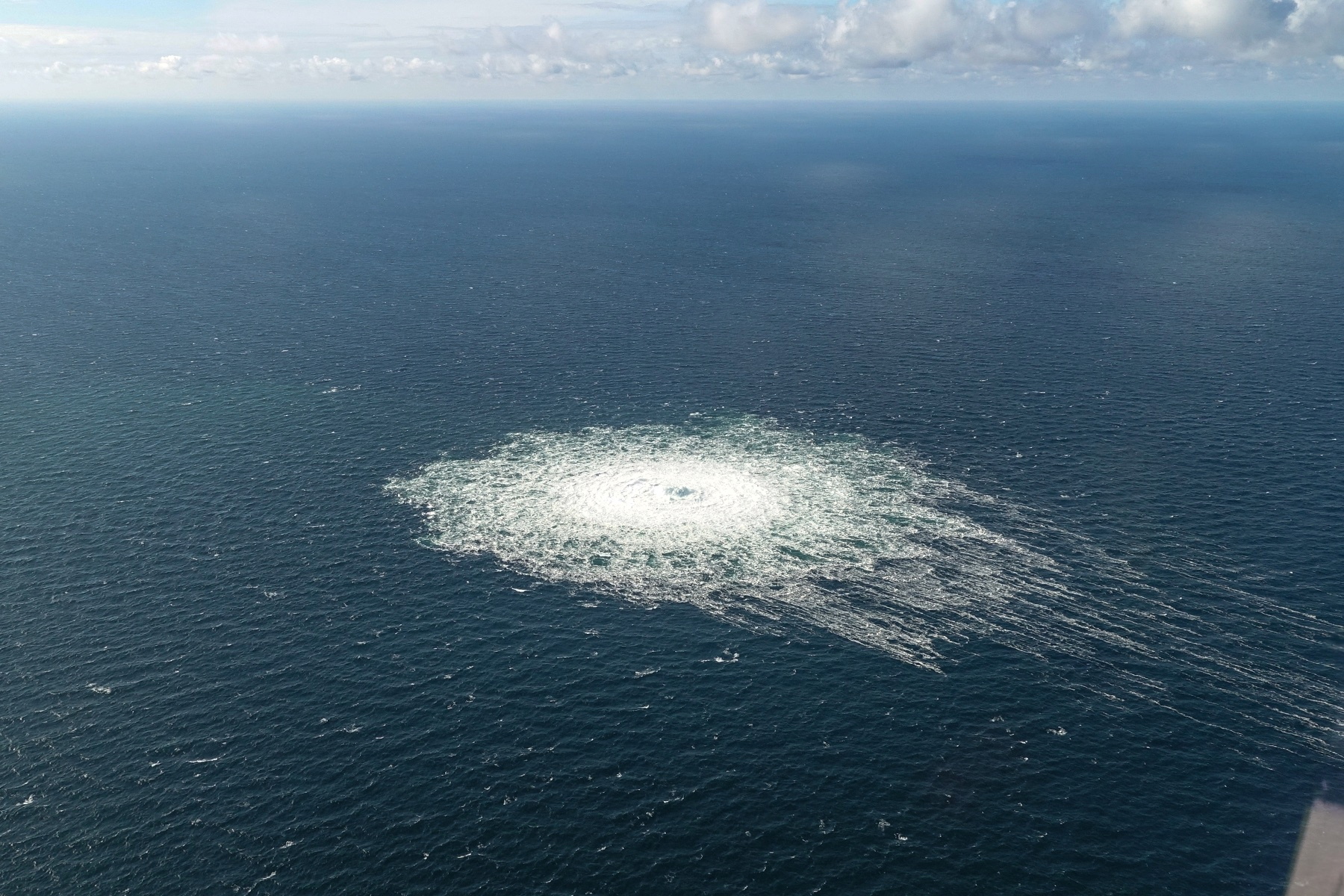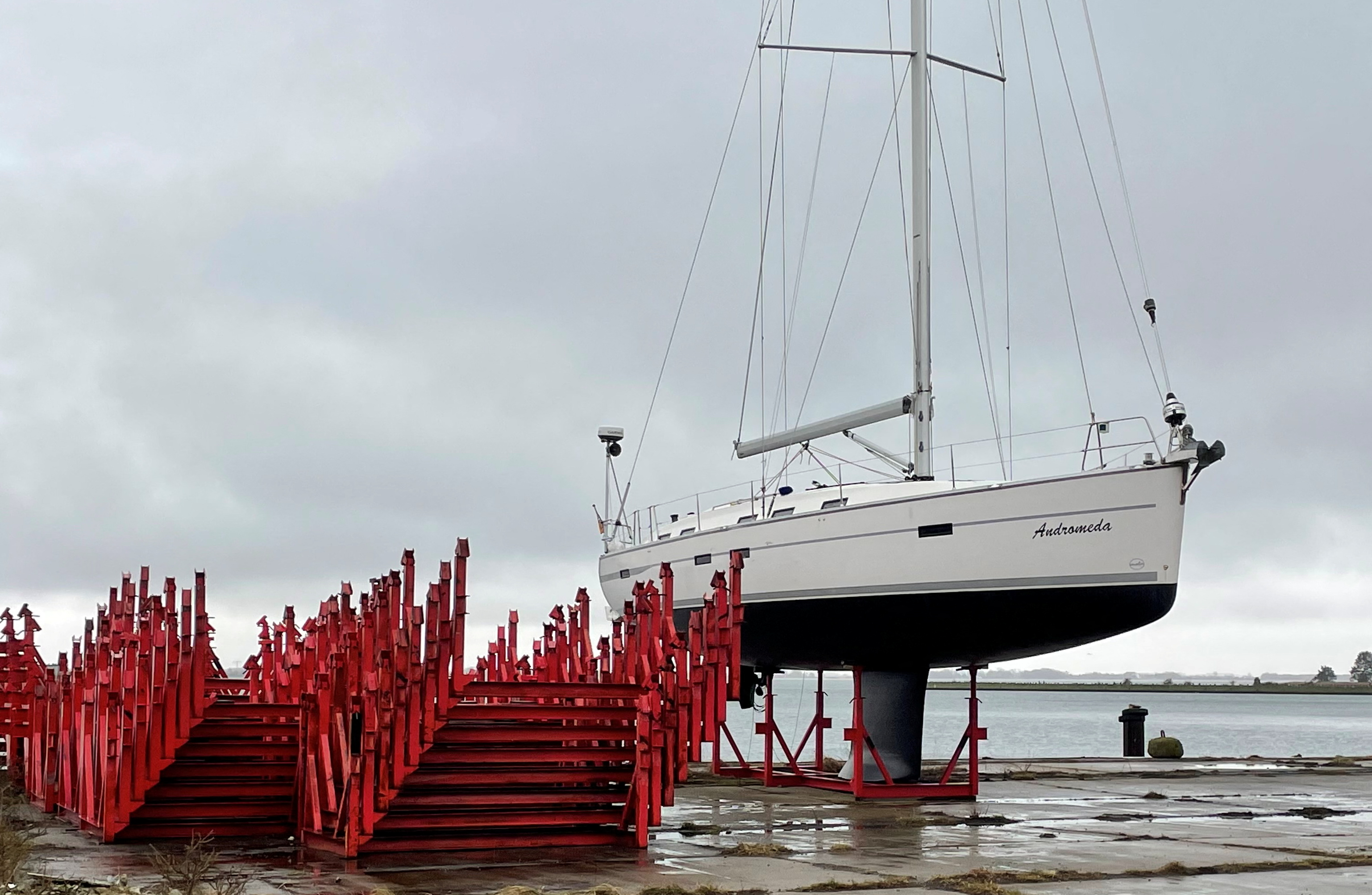
A year has passed since explosions rocked the Nord Stream pipelines, cutting off a major route for Russian gas exports to Europe and fuelling geopolitical tensions already at a fever pitch after Russia launched a full-scale invasion of Ukraine in February 2022.
However, despite official investigations in three countries, the question of who is responsible for the act of sabotage remains unanswered.
Without hard evidence, many theories have emerged pointing the finger at Ukraine, Russia or the United States, all of which have denied involvement.
Here is what we know about the Nord Stream attack:
What happened to the Nord Stream pipelines?
On September 26, 2022, several underwater blasts ruptured three of the four pipelines comprising Nord Stream 1 and Nord Stream 2, spewing vast amounts of gas into the Baltic Sea near Bornholm, Denmark.
Russian energy giant Gazprom halted flows through Nord Stream 1, the main conduit for Russian natural gas to Germany, amid disputes over the war in Ukraine a month earlier.
The newly completed Nord Stream 2 twin pipelines never opened as Berlin pulled the plug on the project days before Russian troops entered Ukraine on February 24, 2022.
The 10-billion-euro ($10.6bn) Nord Stream 2 had long been opposed by Ukraine, the US and Eastern European countries which feared it would give Russia too much influence over Germany’s energy security.

Diplomatically sensitive investigations ongoing
The blasts occurred in the economic zones of Sweden and Denmark, so both countries launched investigations into the incident. So far, they say the explosions were deliberate, but they have yet to single out who was behind the blasts.
Germany also launched an investigation with federal prosecutors searching a yacht in January that might have been used to transport the explosives. They seized objects from the vessel and found traces of explosives.
They have refused to comment on media speculation that a team of five men and one woman chartered the Andromeda yacht from Rostock port to carry out the operation.
“The identity of the perpetrators and their motives” remains the subject of ongoing investigations, Germany’s prosecution office told AFP news agency.
The fact all three countries have kept a tight lid on their investigations is unsurprising, according to analysts, given the potential diplomatic fallout of what they might uncover.

The theories: A pro-Ukrainian group, Russian naval ships, and a US plot
Investigative journalists have been carrying out their own research to solve the Nord Stream whodunnit, leading to sometimes sensational, if unconfirmed, reports.
Dutch military intelligence warned the CIA of a Ukrainian plan to blow up the pipelines three months before the attack, Dutch broadcaster NOS and Germany’s Die Zeit and ARD reported in June. The Washington Post made a similar claim.
Ukraine’s President Volodymyr Zelenskyy has repeatedly denied his country was behind the sabotage.
“I would never do that,” he told Germany’s Bild newspaper, adding he would “like to see proof”.
In March, The New York Times wrote that US officials had seen intelligence indicating a “pro-Ukrainian group” was responsible, without Zelenskyy’s knowledge.
German media have focused on the Andromeda, with reporters from Der Spiegel magazine and broadcaster ZDF recreating the journey they believe was made by the six-person crew.

According to their reporting, a forged passport used to hire the sailboat leads back to a Ukrainian soldier, while the charter fee was paid by a company registered in Poland with ties to a woman in Kyiv.
In June, The Wall Street Journal reported Germany was trying to match DNA samples found on the vessel “to at least one Ukrainian soldier”. The Journal also said evidence found in the investigation included data from Andromeda’s radio and navigation equipment, satellite and mobile phones, and Gmail accounts allegedly used by the perpetrators.
Danish media have reported a Russian naval vessel specialised in submarine operations, the SS-750, was photographed near the site of the blasts days before the attack.
US investigative journalist Seymour Hersh reported in February the US was behind the blasts and that Norway assisted. It was dismissed as “fiction” by the White House.
Was it a false flag operation?
Experts have not ruled out a “false flag” operation by Russia, with clues deliberately placed to pin the blame on Ukraine.
Andreas Umland, an analyst at the Stockholm Centre for Eastern European Studies, said he sees Russia as “the most likely” culprit.
Any suspected involvement by Kyiv in an attack on Europe’s energy infrastructure could threaten the support of allies, which would benefit Russia.
At the same time, the destroyed pipelines could help Gazprom avoid compensation claims for undelivered gas, even though the company was reluctant to keep the taps open before the blasts.
Moscow may have sought “to kill two birds with one stone”, Umland said.
The Kremlin has strongly denied responsibility.
Moscow blames the US
Russia has alleged the US was behind the attack, noting the sabotage “occurred after the repeated threats to the Nord Stream by the leadership of the United States”.
In March, Russian President Vladimir Putin dismissed the argument that Kyiv was behind the explosions, instead laying blame on the US.
“Who is interested? Theoretically, the United States is interested in stopping the supply of Russian energy to the European market and supplying volumes of its own,” he told an interviewer.
“Such an explosion, so powerful and at such depth, could only be conducted by experts backed by the entire potential of a state that has relevant technologies,” said Putin.







